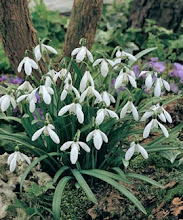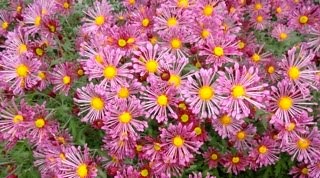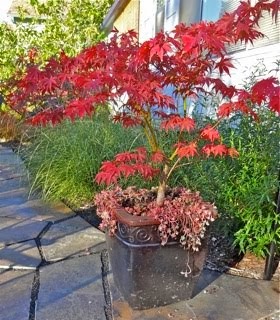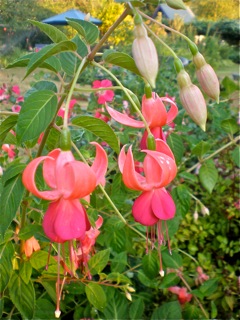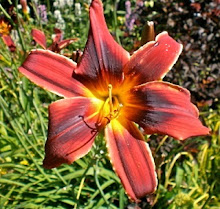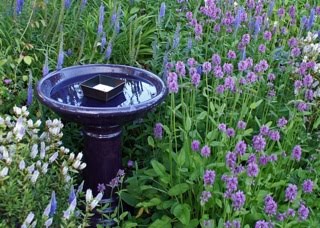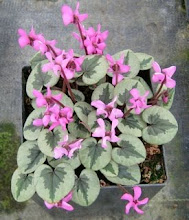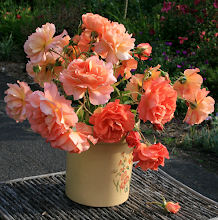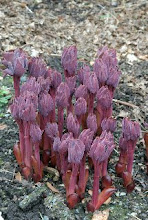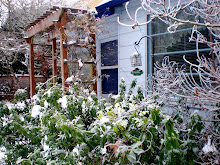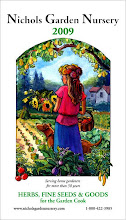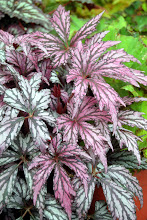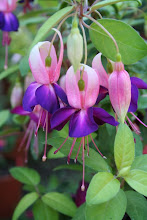I’m delighted that my story, Food Served with Love Tastes Best, has been published in the new Chicken Soup for the Soul: Food and Love.
The story commemorates my Aunt Libby, a beloved relative who embodied the joy of life. A woman ahead of her times, she had a meaningful career, never married or had children, and showered me with love and acceptance. I wish she were still alive to read the story. Her spirit is alive in my heart, and on the pages of Chicken Soup.
After reading Food Served with Love Tastes Best, one fan e-mailed “Everyone should have an Aunt Libby.” Especially when we’re young and vulnerable, a relative or friend who’s in our corner, who doesn’t have preconceived ideas of who we should become, helps us discover and honor our true nature. I will always remember Aunt Libby’s giving me permission to make mistakes—essential if we are to take risks and try new things. She said, “That’s why they make erasers!”
Friday, November 11, 2011
Saturday, October 15, 2011
A Visit to Portland's Best Kept Secret Garden
On an overcast October morning, my friend Diane and I took a stroll through Leach Botanical Garden, guided by Head Gardener Scott Hoelscher, Executive Director David Porter, and Board President Gay Greger. The 16-acre garden is located at 6704 SE 122nd Avenue, just a little south of Foster Road.
Gravel crunched underfoot as we navigated paths winding up and down the hillsides. Shaded by the canopy of enormous conifers, unusual shrubs and lush ferns flourished in the the understory. A pool of delicate Himalayan maidenhair ferns made a big swathe of lacy green, arching like a green cascade, while a colony of robust male ferns spread spread their wide, feathery fronds.
Climbing the gentle slope, we inhaled the aroma of cotton candy wafting from a stately katsura tree in its full autumn glory, golden leaves shimmering in the misty morning air. Scott pointed out several shrubs that will bloom later on in winter, especially evergreen Mahonia confusa, with blue-green foliage and yellow flowers, and Mahonia gracilipes, with red flowers. Sweet box (Sarcococca) had already set buds for fragrant winter blossoms. An bold-leaved paper bush (Edgworthia) will bear silky buds and yellow flowers in just a few months.
We continued to a recently expanded addition to the Rock Garden, where numerous new plants were marked with white flags. A tapestry of low-growing perennials covered the more established part of the Rock Garden. A silver-leaved California fuchsia (Epilobium canum), smothered with bright orange flowers, warmed up the picture.
As in most gardens tended by passionate gardeners, change is constant. A large sweep of Aucuba had recently been recycled to make room for more interesting species Rhododendrons.
“We’re trying to get rid of over-represented plants,” Scott explained. “We’re also getting rid of all the ivy.” The original garden owners, John and Lilla Leach, had collected over thirty varieties of ivy.
We came upon colonies of broad-leaved hart’s tongue ferns growing happily in the crevices of old, moss-covered retaining walls built of recycled concrete. On the slopes, newly planted chain ferns (Woodwardia) were settling in along with tree ferns (Dicksonia).
As we descended the stairs to the riparian area, David and I talked about the continuous process of change and refinement that creative gardeners undertake. He summed it up well.
“Since the mind never rests, the garden never rests,” he said. “Our gardens never stop changing because they really are the product of our minds, which are constantly imagining and creating.”
Approaching its 30th anniversary, Leach Botanical Garden is in the midst of many creative changes. A Master Plan will address development of the Upper Garden’s landscape, where two meadows await the imagination of a design group. This past summer’s oversize tent became the venue for Leach Garden Arts, attracting many new visitors. New classes will be dreamt up, and more collaboration with local artists is in the works.
Coming soon is the fabulous Holiday Bazaar, where wreaths, swags, table centerpieces and greens will be available for modest prices. Volunteers are needed to help create these goodies, during the week after Thanksgiving. To learn more, or volunteer, contact 503-823-1671 or info@LeachGarden.org. Close to 100 volunteers help maintain this public garden, and many more are needed.
Gravel crunched underfoot as we navigated paths winding up and down the hillsides. Shaded by the canopy of enormous conifers, unusual shrubs and lush ferns flourished in the the understory. A pool of delicate Himalayan maidenhair ferns made a big swathe of lacy green, arching like a green cascade, while a colony of robust male ferns spread spread their wide, feathery fronds.
Climbing the gentle slope, we inhaled the aroma of cotton candy wafting from a stately katsura tree in its full autumn glory, golden leaves shimmering in the misty morning air. Scott pointed out several shrubs that will bloom later on in winter, especially evergreen Mahonia confusa, with blue-green foliage and yellow flowers, and Mahonia gracilipes, with red flowers. Sweet box (Sarcococca) had already set buds for fragrant winter blossoms. An bold-leaved paper bush (Edgworthia) will bear silky buds and yellow flowers in just a few months.
We continued to a recently expanded addition to the Rock Garden, where numerous new plants were marked with white flags. A tapestry of low-growing perennials covered the more established part of the Rock Garden. A silver-leaved California fuchsia (Epilobium canum), smothered with bright orange flowers, warmed up the picture.
As in most gardens tended by passionate gardeners, change is constant. A large sweep of Aucuba had recently been recycled to make room for more interesting species Rhododendrons.
“We’re trying to get rid of over-represented plants,” Scott explained. “We’re also getting rid of all the ivy.” The original garden owners, John and Lilla Leach, had collected over thirty varieties of ivy.
We came upon colonies of broad-leaved hart’s tongue ferns growing happily in the crevices of old, moss-covered retaining walls built of recycled concrete. On the slopes, newly planted chain ferns (Woodwardia) were settling in along with tree ferns (Dicksonia).
As we descended the stairs to the riparian area, David and I talked about the continuous process of change and refinement that creative gardeners undertake. He summed it up well.
“Since the mind never rests, the garden never rests,” he said. “Our gardens never stop changing because they really are the product of our minds, which are constantly imagining and creating.”
Approaching its 30th anniversary, Leach Botanical Garden is in the midst of many creative changes. A Master Plan will address development of the Upper Garden’s landscape, where two meadows await the imagination of a design group. This past summer’s oversize tent became the venue for Leach Garden Arts, attracting many new visitors. New classes will be dreamt up, and more collaboration with local artists is in the works.
Coming soon is the fabulous Holiday Bazaar, where wreaths, swags, table centerpieces and greens will be available for modest prices. Volunteers are needed to help create these goodies, during the week after Thanksgiving. To learn more, or volunteer, contact 503-823-1671 or info@LeachGarden.org. Close to 100 volunteers help maintain this public garden, and many more are needed.
Tuesday, August 30, 2011
'Midnight Barbara Blossom' daylily
Bob Anderson of Midnight Gardens has given me the greatest gift: a daylily he’s named ‘Midnight Barbara Blossom!’ Here’s how Bob describes it:
“I think this flower is especially notable for the saturated red base color, metallic finish, black-red veining and chevron eye.” YES!
It all began when I visited his nursery on a sunny morning in July, with my friend Donna. This was my second year in a row to check out the beds, sparkling with pink, red, orange, yellow, purple and lavender daylilies.
Bob took us on a tour, pointing out some of the latest hybrids, like ‘Emerald Starburst,’ with green and wine flowers.
“It’s a cutting edge color,” he said. “Bigger blooms and intense colors are what people are drawn to.”
We took a close look at ‘Midnight Velvet Touch,” a rich black red, with good branching and high bud count. Then Bob showed us ‘Lemon Lollypop.’
“It’s the first daylily to bloom, and repeats, with three flushes of bloom, and good blue-green foliage,” he said. I scribbled a note to myself to buy it. A little voice inside whispered You don’t need any more daylilies. I replied, Yes I do!
While we strolled along, Bob’s friend Loraine, was steadily deadheading and weeding.
“I’m a weed killer,” she declared, demonstrating her mission with a hand-held mattock. “I help Bobby out—it’s fun to watch it all grow.” Loraine likes to be known as the “Weed Wolf.”
Now some growers are great with plants, yet shy away from people, but Bob has a wonderful way with plants and humans. So before long Donna, Bob, Loraine, and I were chatting away like old friends. That morning visit had turned into a plant lovers’ party.
At one point Bob asked me to choose a favorite seedling. As a hybridizer, he crosses many daylilies to create new cultivars, but keeps only about 20% of his seedlings, those which are clearly better than similar ones already on the market. One dark wine daylily with a spidery shape kept calling to me. A yellow throat and streaks of white along the petals in a starburst pattern made the burgundy-red pop. To me, the texture looked like satin, and the petals recurved at the edges. “That one!” I said, pointing to the dark beauty.
Pretty soon Bob got busy with other visitors. Donna and I placed our orders for daylilies, waved goodbye to Bob and Loraine, and slipped away. We would pick our plants up later in the summer when it was the right time for Bob to divide and dig the daylilies for his customers.
A week or so later I received a beautiful handwritten card from Bob in the mail, asking if he could name the burgundy daylily for me. The new plant, ‘Midnight Barbara Blossom,’ will be introduced in 2012. But Bob went even further. Last Saturday he dug divisions of the daylily for Donna and me to plant in our gardens right now! I can hardly wait until next summer to see it bloom again.
“I think this flower is especially notable for the saturated red base color, metallic finish, black-red veining and chevron eye.” YES!
It all began when I visited his nursery on a sunny morning in July, with my friend Donna. This was my second year in a row to check out the beds, sparkling with pink, red, orange, yellow, purple and lavender daylilies.
Bob took us on a tour, pointing out some of the latest hybrids, like ‘Emerald Starburst,’ with green and wine flowers.
“It’s a cutting edge color,” he said. “Bigger blooms and intense colors are what people are drawn to.”
We took a close look at ‘Midnight Velvet Touch,” a rich black red, with good branching and high bud count. Then Bob showed us ‘Lemon Lollypop.’
“It’s the first daylily to bloom, and repeats, with three flushes of bloom, and good blue-green foliage,” he said. I scribbled a note to myself to buy it. A little voice inside whispered You don’t need any more daylilies. I replied, Yes I do!
While we strolled along, Bob’s friend Loraine, was steadily deadheading and weeding.
“I’m a weed killer,” she declared, demonstrating her mission with a hand-held mattock. “I help Bobby out—it’s fun to watch it all grow.” Loraine likes to be known as the “Weed Wolf.”
Now some growers are great with plants, yet shy away from people, but Bob has a wonderful way with plants and humans. So before long Donna, Bob, Loraine, and I were chatting away like old friends. That morning visit had turned into a plant lovers’ party.
At one point Bob asked me to choose a favorite seedling. As a hybridizer, he crosses many daylilies to create new cultivars, but keeps only about 20% of his seedlings, those which are clearly better than similar ones already on the market. One dark wine daylily with a spidery shape kept calling to me. A yellow throat and streaks of white along the petals in a starburst pattern made the burgundy-red pop. To me, the texture looked like satin, and the petals recurved at the edges. “That one!” I said, pointing to the dark beauty.
Pretty soon Bob got busy with other visitors. Donna and I placed our orders for daylilies, waved goodbye to Bob and Loraine, and slipped away. We would pick our plants up later in the summer when it was the right time for Bob to divide and dig the daylilies for his customers.
A week or so later I received a beautiful handwritten card from Bob in the mail, asking if he could name the burgundy daylily for me. The new plant, ‘Midnight Barbara Blossom,’ will be introduced in 2012. But Bob went even further. Last Saturday he dug divisions of the daylily for Donna and me to plant in our gardens right now! I can hardly wait until next summer to see it bloom again.
Tuesday, August 23, 2011
Two Cafes with Gardens to Enjoy
What greater pleasure than to eat in a garden on a summer afternoon or evening? Lately I’ve discovered two destinations worth traveling to. DiPrima Dolce at 1936 N. Killingsworth is open daily from 7 a.m. to 5 p.m., daily, and for dinner on Fridays and Saturdays in the summer. I’ve been there twice, once for breakfast and once for lunch. The frittatas are out of this world. Served with home made bread and well seasoned potatoes, this is a meal to savor. Eating in DiPrima Dolce’s perfectly groomed garden, surrounded by ferns, hydrangeas, flowering perennials and fragrant herbs completes the experience. What’s best is that it’s not my own garden, with deadheads crying out to be snipped and weeds hollering to be yanked. I sat there peacefully, enjoying quiet conversation with a friend, the mild air, the buzz of hummingbirds, the drone of bees, and the taste of delicious home made food.
Singer Hill Cafe at 7th and John Adams Street in Oregon City is open from 7 a.m. to 8 p.m., Tuesday through Saturday, 8 a.m. to 5 p.m. on Sunday, and 7 a.m. to 6 p.m. on Monday, with live music on Friday and Saturday evenings. The menu offers freshly made sandwiches, salads, wraps and Stumptown Coffee. On a rainy day the spacious interior is pleasant, with art on the walls. But the gardens are the highlight of a visit to Singer Hill Cafe. Inspired by vertical gardens in Madrid, the outdoor patio is an amazing sight with walls transformed into blankets of flourishing plants, and columns dripping with greenery. A tapestry of heucheras, hostas, ferns, hydrangeas, sedums and more have turned a long alley into a sumptuous garden.
Singer Hill Cafe
Thursday, August 4, 2011
Perfect Partners for Summer
Perfect Pairs
When perfectly matched plants bloom together in the garden, I feel thoroughly satisfied. Sometimes I’ve planned a winning combination, but just as often, purely by chance, a stray seedling pops up right beside the ideal partner. Either way, here are some terrific pairings for midsummer.
I’ve always adored ‘Strutter’s Ball’ daylily. The wine flowers have the texture of velvet—I would love to have a jacket just like this. ‘Xenon’ sedum, with thick, waxy leaves of an even deeper burgundy, is a great companion, and sets buds just about when the daylily finishes blooming. Soft pink flowers arrive in late summer, lasting into fall. To cap off this combination,‘‘Madame Julia Correvon’ clematis scrambles through ‘Winter Fire’ cistus, an evergreen shrub which anchors the bed. ‘Madame Julia’ is a lively red-pink, echoing the central wine blotch in the heart of the cistus flowers, as well as the daylily flowers, and the sedum foliage.
Just when everything was coming together so well, ‘Lucifer’ crocosmia seeded itself into the composition for a hideous color clash. I guess I was feeling too cocky, so this blast of in-your-face orangey-red came along to humble me. If it weren’t for the hummingbirds that sip from Lucifer’s flowers, I would yank him out. But mercifully, the hummingbirds have saved him from shovel pruning.
In another bed, even after removing every shred of ‘Lucifer’ from a bed near the side path where colonies leaned and sprawled every summer, dozens of seedlings sprouted right cross the path, defying me. At first I was plenty mad, thinking, How could they, but this morning when I spent a good five minutes watching a very happy hummingbird drink her ‘Lucifer’ lunch, I changed my mind and decided it was all for a good purpose. Sometimes it’s OK to give up control and let the plants have their way. The garden is not just about my will. Please remind me of this resolution the next time I go on a mission to hunt and destroy.
When perfectly matched plants bloom together in the garden, I feel thoroughly satisfied. Sometimes I’ve planned a winning combination, but just as often, purely by chance, a stray seedling pops up right beside the ideal partner. Either way, here are some terrific pairings for midsummer.
I’ve always adored ‘Strutter’s Ball’ daylily. The wine flowers have the texture of velvet—I would love to have a jacket just like this. ‘Xenon’ sedum, with thick, waxy leaves of an even deeper burgundy, is a great companion, and sets buds just about when the daylily finishes blooming. Soft pink flowers arrive in late summer, lasting into fall. To cap off this combination,‘‘Madame Julia Correvon’ clematis scrambles through ‘Winter Fire’ cistus, an evergreen shrub which anchors the bed. ‘Madame Julia’ is a lively red-pink, echoing the central wine blotch in the heart of the cistus flowers, as well as the daylily flowers, and the sedum foliage.
Just when everything was coming together so well, ‘Lucifer’ crocosmia seeded itself into the composition for a hideous color clash. I guess I was feeling too cocky, so this blast of in-your-face orangey-red came along to humble me. If it weren’t for the hummingbirds that sip from Lucifer’s flowers, I would yank him out. But mercifully, the hummingbirds have saved him from shovel pruning.
In another bed, even after removing every shred of ‘Lucifer’ from a bed near the side path where colonies leaned and sprawled every summer, dozens of seedlings sprouted right cross the path, defying me. At first I was plenty mad, thinking, How could they, but this morning when I spent a good five minutes watching a very happy hummingbird drink her ‘Lucifer’ lunch, I changed my mind and decided it was all for a good purpose. Sometimes it’s OK to give up control and let the plants have their way. The garden is not just about my will. Please remind me of this resolution the next time I go on a mission to hunt and destroy.
Tuesday, June 7, 2011
Reflections on June 4th Open Garden
My June 4th open garden for the Raleigh Park Garden Tour was full of joy. When three little girls came around the side of the garden and went "oooh!" and “ah,” my heart sang! It was wonderful to greet old friends, neighbors, make new friends. The wheelbarrows filled with souvenir plants were empty by noon, as early visitors quickly took advantage of the freebies. Later in the afternoon I dug up divisions of Phlomis and calla lilies for some admirers who had that desperate look of craving in their eyes.
For a while I sat on one of the pink chairs underneath the apple tree and watched and listened to people, soaking in their enjoyment and appreciation. Every so often someone would plop down on the other chair and we’d chat. Several friends from my Golden Gardeners group arrived, and we sat under the grape arbor, enjoying the shade. A young woman stopped to ask us how to prune clematis, and all four of us gave her more advice than she could absorb. Finally I said, “You can’t go wrong, clematis are very forgiving,” and she smiled with relief.
Opening my garden is a peak experience, starting with weeks of refining the garden in preparation—planting, editing, pruning, weeding, grooming. The day arrives faster than I can imagine, and then it’s over in a flash. Pretty soon I’m planning the next one. Stay tuned for an open garden in honor of the roses, late to bloom this year, but deserving our full admiration.
For a while I sat on one of the pink chairs underneath the apple tree and watched and listened to people, soaking in their enjoyment and appreciation. Every so often someone would plop down on the other chair and we’d chat. Several friends from my Golden Gardeners group arrived, and we sat under the grape arbor, enjoying the shade. A young woman stopped to ask us how to prune clematis, and all four of us gave her more advice than she could absorb. Finally I said, “You can’t go wrong, clematis are very forgiving,” and she smiled with relief.
Opening my garden is a peak experience, starting with weeks of refining the garden in preparation—planting, editing, pruning, weeding, grooming. The day arrives faster than I can imagine, and then it’s over in a flash. Pretty soon I’m planning the next one. Stay tuned for an open garden in honor of the roses, late to bloom this year, but deserving our full admiration.
Monday, May 30, 2011
White at Night: Summer Blooming Clematis
If you love to linger in the garden on the long summer evenings, try some floral moonlight. Full of large white blossoms, Clematis henryi is like a beacon, whether it’s climbing an obelisk or scrambling through shrubbery.
My friend Gail Austin, who has an entire wall of clematis in her Southwest Portland garden, plus many more climbing posts and trellises, says Henryi is the most outstanding white clematis.
“The flowers are huge and the contrast with its deep green foliage makes it stand out from across the garden. It also reliably reblooms in late summer. This is a very special clematis for me because it was my late husband Ken's favorite. When Henryi blossomed for the first time each spring, he would come and find me, take my hand and hurry me over to the plant so we could "ooh" and "aah" together at its pristine beauty. Then he would measure the blossom, and like a proud new papa after the birth of his first child, announce its size. One year it was almost ten inches across, and he could hardly contain himself!”
Clematis ‘Huldine’ and ‘Alba Luxurians’ are more modest in size, but just as luminous. ‘Huldine’ originates from France, and is stylishly cup-shaped, with six overlapping petals with the texture of satin. ‘Alba Luxurians’ is more papery, with distinctive green markings at the tips of the petals. I’ve grown both on my grape arbor where their white flowers drape over the edges like froth of lace below the large grape leaves.
I first saw ‘Alba Luxurians’ on an autumn visit to an English garden designed by Graham Stuart Thomas (the venerable author of my favorite books on roses, perennials and ornamental shrubs). The white flowers wove their way up a large Rosa glauca, mingling beautifully with the rose’s gray-green leaves and red fall hips.
The combination was deceptively simple, and all the more riveting because it was repeated throughout the same border. For me, who has to have one plant of every kind, dedicating so much space to the several of the same plants was almost sacrilegious. But it was a great lesson in restraint. Although I do admire this quality, I haven’t yet embraced it.
I haven’t yet grown ‘Guernsey Cream,’ but a recent photo of it is so enticing I’m putting it on my wish list. Both Gail Austin and Clematis Queen Linda Beutler praise it, so it’s gotta be great.
My friend Gail Austin, who has an entire wall of clematis in her Southwest Portland garden, plus many more climbing posts and trellises, says Henryi is the most outstanding white clematis.
“The flowers are huge and the contrast with its deep green foliage makes it stand out from across the garden. It also reliably reblooms in late summer. This is a very special clematis for me because it was my late husband Ken's favorite. When Henryi blossomed for the first time each spring, he would come and find me, take my hand and hurry me over to the plant so we could "ooh" and "aah" together at its pristine beauty. Then he would measure the blossom, and like a proud new papa after the birth of his first child, announce its size. One year it was almost ten inches across, and he could hardly contain himself!”
Clematis ‘Huldine’ and ‘Alba Luxurians’ are more modest in size, but just as luminous. ‘Huldine’ originates from France, and is stylishly cup-shaped, with six overlapping petals with the texture of satin. ‘Alba Luxurians’ is more papery, with distinctive green markings at the tips of the petals. I’ve grown both on my grape arbor where their white flowers drape over the edges like froth of lace below the large grape leaves.
I first saw ‘Alba Luxurians’ on an autumn visit to an English garden designed by Graham Stuart Thomas (the venerable author of my favorite books on roses, perennials and ornamental shrubs). The white flowers wove their way up a large Rosa glauca, mingling beautifully with the rose’s gray-green leaves and red fall hips.
The combination was deceptively simple, and all the more riveting because it was repeated throughout the same border. For me, who has to have one plant of every kind, dedicating so much space to the several of the same plants was almost sacrilegious. But it was a great lesson in restraint. Although I do admire this quality, I haven’t yet embraced it.
I haven’t yet grown ‘Guernsey Cream,’ but a recent photo of it is so enticing I’m putting it on my wish list. Both Gail Austin and Clematis Queen Linda Beutler praise it, so it’s gotta be great.
Sunday, March 13, 2011
A visit to Edelweiss Perennials
A rainy day was perfect for a drive down to Canby for Edelweiss Perennials’ first open house of the season. The aroma of chocolate chip cookies filled the greenhouse as I entered, and it was tough to decide whether to go for the cookies or the stands of plants marked 1/2 off. The plants won. I’d already e-mailed owner Urs Baltensperger with my list of plants, selected from his website (plants pulled in advance get a 10% discount) and a box was waiting for me behind the cash register, but it wouldn’t hurt at all to add to the stash.
Once I pulled a few of the plants on clearance, I went to the tables loaded with treasures. Small pots as well as husky gallons brimmed over with vigorous hellebores, epimediums, as well as bright pink cyclamen in full bloom. By now I didn’t need that cookie; I was in plant heaven.
Friends greeted each other as they landed in the greenhouse, then got busy studying the plants and making their selections. When the serious work was done, and we loaded our cars up, a few of us drove off to Starbucks to celebrate and schmooze.
It wasn’t til I got home that I realized what treasure I had scored. Several small pots were so stuffed with healthy plants that I had to cut the pots away to get the plants out. One epimedium was so well grown I was able to divide into four parts, then repot each division. Every plant will continue to grow in my cool greenhouse until I figure out where to plant them. That will keep me daydreaming for the next few weeks.
Edelweiss will have more open houses and will also sell at future events (check the website for dates). Don’t miss a chance to enjoy some fabulous, healthy and unusual plants!
Once I pulled a few of the plants on clearance, I went to the tables loaded with treasures. Small pots as well as husky gallons brimmed over with vigorous hellebores, epimediums, as well as bright pink cyclamen in full bloom. By now I didn’t need that cookie; I was in plant heaven.
Friends greeted each other as they landed in the greenhouse, then got busy studying the plants and making their selections. When the serious work was done, and we loaded our cars up, a few of us drove off to Starbucks to celebrate and schmooze.
It wasn’t til I got home that I realized what treasure I had scored. Several small pots were so stuffed with healthy plants that I had to cut the pots away to get the plants out. One epimedium was so well grown I was able to divide into four parts, then repot each division. Every plant will continue to grow in my cool greenhouse until I figure out where to plant them. That will keep me daydreaming for the next few weeks.
Edelweiss will have more open houses and will also sell at future events (check the website for dates). Don’t miss a chance to enjoy some fabulous, healthy and unusual plants!
Wednesday, February 23, 2011
A Few of Our Favorite Plants
At February’s Yard Garden & Patio Show the most fun I had was sharing the stage with Oregonian columnist Dulcy Mahar, and Maurice Horn, co-owner of Joy Creek Nursery, as well as Lori Volmer, co-owner of Garden Fever. Each of us had been asked to come up with a list of three favorite trees, shrubs, perennials and annuals.
Since this was an impossible task, we all cheated and made much longer lists, then talked as fast as we could to make sure all of our plants got their share of praise. Moderator Nancy Goldman kept us in line, mostly. It was hard for us plant nerds to behave ourselves when we get excited.
Since our combined lists were too long to mention, I’ll start with our overlaps. Dulcy and I both loved ‘Grace’ smokebush and Japanese snowbell tree. Most of us agreed that ‘Westerland’ rose is a must for the color, a blend of orange and pink, and the fragrance, and for its versatility—you can grow it as a shrub or a climber. Hydrangeas were praised repeatedly—‘Blue Billows,’ Hydrangea aspera, Hydrangea paniculata ‘Pinky Winky,’ and Hydrangea serrata ‘Miyama Yae-Murasaki.’
Lots of wine-leaved plants got high marks, including several ninebarks—‘Coppertina,’ ‘Center Glow,’ and ‘Summer Wine—as well as ‘Wine and Roses’ weigela. Gold foliage was popular all around: the golden form of mock orange, golden forest grass, and ‘Golden Ghost’ pine were among the chosen.
When pressed to pick just one favorite plant—after we finished agonizing about how truly impossible this was—Dulcy and I both chimed in, “Hellebore!” No doubt that was the seasonal effect of answering this question in February. By June we would likely have come up with a rose.
Since this was an impossible task, we all cheated and made much longer lists, then talked as fast as we could to make sure all of our plants got their share of praise. Moderator Nancy Goldman kept us in line, mostly. It was hard for us plant nerds to behave ourselves when we get excited.
Since our combined lists were too long to mention, I’ll start with our overlaps. Dulcy and I both loved ‘Grace’ smokebush and Japanese snowbell tree. Most of us agreed that ‘Westerland’ rose is a must for the color, a blend of orange and pink, and the fragrance, and for its versatility—you can grow it as a shrub or a climber. Hydrangeas were praised repeatedly—‘Blue Billows,’ Hydrangea aspera, Hydrangea paniculata ‘Pinky Winky,’ and Hydrangea serrata ‘Miyama Yae-Murasaki.’
Lots of wine-leaved plants got high marks, including several ninebarks—‘Coppertina,’ ‘Center Glow,’ and ‘Summer Wine—as well as ‘Wine and Roses’ weigela. Gold foliage was popular all around: the golden form of mock orange, golden forest grass, and ‘Golden Ghost’ pine were among the chosen.
When pressed to pick just one favorite plant—after we finished agonizing about how truly impossible this was—Dulcy and I both chimed in, “Hellebore!” No doubt that was the seasonal effect of answering this question in February. By June we would likely have come up with a rose.
Wednesday, January 5, 2011
Falling in Love with 'Josephine' Clematis
I always keep a wish list of plants on a handy large sticky note tucked into my weekly pocket calendar. This year’s list has ‘Josephine’ clematis at the top. My first impression, when I came face to face with this flower at Cindy Fairbrook’s garden in Olympia, Washington, was that it was too flamboyant. I might have even heard myself thinking, “Oh too garish, just too over the top!”
Then I saw it again at a few gardens in Portland—at Diana Lamb’s, growing up a post, and again at Gail Austin’s garden, scrambling over the top of an antique plow. ‘Josephine’ was beginning to look beautiful to me, adorably feminine. The central bud of her double flower stood up like a cream-colored topknot, surrounded by a ring of fluffy pink petals like a crinoline. A final layer of outer petals were like a frame around a beautiful painting. The flower was a delicious confection that I now simply have to find for my own garden.
Then I saw it again at a few gardens in Portland—at Diana Lamb’s, growing up a post, and again at Gail Austin’s garden, scrambling over the top of an antique plow. ‘Josephine’ was beginning to look beautiful to me, adorably feminine. The central bud of her double flower stood up like a cream-colored topknot, surrounded by a ring of fluffy pink petals like a crinoline. A final layer of outer petals were like a frame around a beautiful painting. The flower was a delicious confection that I now simply have to find for my own garden.
Subscribe to:
Posts (Atom)



